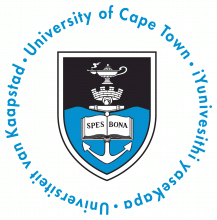
Browse the full list of the world's top 150 universities under 50 years old
Young universities offer more opportunities for interdisciplinary studies and innovative teaching, according to students and staff at the world’s best young universities in the Times Higher Education 150 Under 50 Rankings 2016 released today.
The top of the ranking features institutions from Asia and continental Europe, including École Polytechnique Fédérale de Lausanne in Switzerland in first place, followed by Singapore’s Nanyang Technological University and Hong Kong University of Science and Technology.
- Explore other top universities in Germany under 50 years old
- See more top universities in the Netherlands
Universities in the Netherlands, South Korea, Germany, France, Italy, Belgium, Spain and Luxembourg also feature in the top 15, while the UK is most-represented in the overall ranking of 150 universities.
Many of the best young universities pursue novel approaches to learning and research, such as 40-year-old Maastricht University ranked in fourth place.
Maastricht University president Martin Paul explained: “We offer our students small-scale interactive tutorials several times a week. These groups of approximately 12 students are guided by a tutor; together they solve complex case studies related to real-life problems.
“With tutorials at least twice a week, they are not only encouraged to study; they are also guided in how to study.”
The university also strives to reflect changing social and professional developments, by ensuring a range of cultural perspectives among both students and teachers, and integrating interdisciplinary approaches to best prepare graduates for the workplace.
Anthony Hill, a UK student-assistant and third-year student, feels that Maastricht is more dynamic and open to change than older universities.
He said: “I chose Maastricht University because I was impressed and intrigued with the Problem-Based Learning System when I visited on an open day. Discussing concepts and ideas several times a week with your tutor and other students sounded much more appealing to me than just attending lectures. It sounded like a different style of teaching than some of the other, normally ‘older’, universities were using.”
Also in the top five, POSTECH (Pohang University of Science and Technology) in South Korea was founded 30 years ago as a small, research-oriented and bilingual university, a radical departure from traditional institutions.
Explore the best universities in Asia 2016
Dr. Woo-Jin Song, Vice President for Budget and Planning, said: “It seems that the students also feel a strong sense of ownership because the university grows and matures along with them.”
Recent changes at POSTECH include academic credits for the massive open online courses (Moocs), increased support for teachers using the flipped learning model in their classroom and a reshaping of the term system so that students can better arrange internships during the summer break.
Jisong Chae, a student in the department of chemistry, feels that POSTECH stands out from older universities as it is able to put more energy into training students for research.
She says: “I can take laboratory-based courses every semester and have them count towards my graduation credits. I also get to delve into research topics of my interest under supervision of professors through the Undergraduate Research Program that funds students’ research projects. Furthermore, students are required to join and experience various research labs in their fields at least two or more times before they graduate so that they can have a glimpse of their future as researchers.”
Claim a free copy of the full 150 Under 50 Rankings 2016 digital supplement
Many universities under 50 years old bring novel approaches to their teaching, but different universities manage this in very different ways.
Scuola Superiore Sant’Anna, number 10 in the ranking with a particularly high teaching score, offers a specialised programme for honours students (allievi ordinary), which includes more advanced and specialised courses.
Roberto Ganau, studying economics and economic history, says: “The teaching style is different from other universities because more independent study is expected from the student. In many classes, we already have to have studied the material in order to engage in a debate with other students and the teacher or to present a paper which was assigned by the latter.”
In France, students tend to narrowly specialise in their degree. But Pierre and Marie Curie University, ranked within the top 10, offers students new opportunities to combine majors and minors, such as science and Chinese.
Pierre and Marie Curie University’s vice-president for education Nathalie Drach-Temam said: “This opportunity to customise studies is the best guarantee that students will be agile and adaptable for future technology breakthroughs and professions.”
One of the youngest universities in the ranking is Aalto University in Finland, founded in 2010 with the strategic aim to “educate game-changers…to build a sustainable society and to increase well-being through disruptive change”, according to Eija Zitting, head of learning services.
To do this, the university employs digital learning solutions, uses blended learning strategies with digital content, focuses on entrepreneurial education and uses experimental learning spaces on campus.
However, some of this innovation is lost on the students, since – according to current student Anna Marttila – too much energy goes into innovation and change without assessing the results.
“I feel, and several of my friends do too, that because the change is so recent there is still a lot of figuring out to do, and many things are not working as well as they could and should be,” she said.
“An upside to the sometimes chaotic time of change is that there is clearly an opportunity for excellence and also an opportunity to change things.”
Universities under 50 – the top 20
|
Under 50 rank |
2015-16 World University Ranking |
University |
Country |
Overall score |
Year founded |
|
1 |
31 |
Switzerland |
76.8 |
1969 |
|
|
2 |
55 |
Nanyang Technological University |
Singapore |
72.5 |
1991 |
|
3 |
59 |
Hong Kong University of Science and Technology |
Hong Kong |
70.7 |
1991 |
|
4 |
=88 |
Netherlands |
66.1 |
1976 |
|
|
5 |
116 |
Pohang University of Science and Technology |
South Korea |
65.5 |
1986 |
|
6 |
148 |
South Korea |
60.8 |
1971 |
|
|
7 |
175 |
Germany |
58.9 |
1966 |
|
|
8 |
=138 |
Germany |
58.6 |
2009 |
|
|
9 |
=113 |
France |
58.2 |
1971 |
|
|
10 |
=180 |
Scuola Superiore Sant’Anna |
Italy |
57.3 |
1987 |
|
11 |
=190 |
Belgium |
56.5 |
2003 |
|
|
12 |
146 |
Autonomous University of Barcelona |
Spain |
55.8 |
1968 |
|
13 |
192 |
Germany |
55.5 |
1967 |
|
|
14 |
=193 |
Luxembourg |
55.3 |
2003 |
|
|
15 |
=164 |
Spain |
54.6 |
1990 |
|
|
16 |
=185 |
United Kingdom |
54.5 |
1967 |
|
|
17 |
201–250 |
Germany |
54.1 |
2003 |
|
|
=18 |
201–250 |
Canada |
53.0 |
1966 |
|
|
=18 |
188 |
France |
53.0 |
1971 |
|
|
20 |
201–250 |
Hong Kong |
52.7 |
1984 |
























